 During World War II, letters were essential for soldiers and sailors stationed overseas. The average soldier wrote six letters a week. Those letters took anywhere from 1 to 4 weeks to cross the ocean to the United States.
During World War II, letters were essential for soldiers and sailors stationed overseas. The average soldier wrote six letters a week. Those letters took anywhere from 1 to 4 weeks to cross the ocean to the United States.
Each letter received at home assured loved ones that their serviceman was still alive and well when he wrote that letter.
For the troops, letters from home were the single biggest morale booster, and a force with high morale fights better.
The logistical task of sending and delivering all these letters proved quite the challenge, especially when transporting the mail across the Atlantic Ocean.
Mail sent via cargo ships was slow to arrive, taking up to a month. But the alternative of sending mail via cargo planes, taking less than two weeks, was expensive.
Moreover, cargo space on these planes was at a premium (for critical weapons and supplies), and letters were bulky both in weight and in the space that they took up.
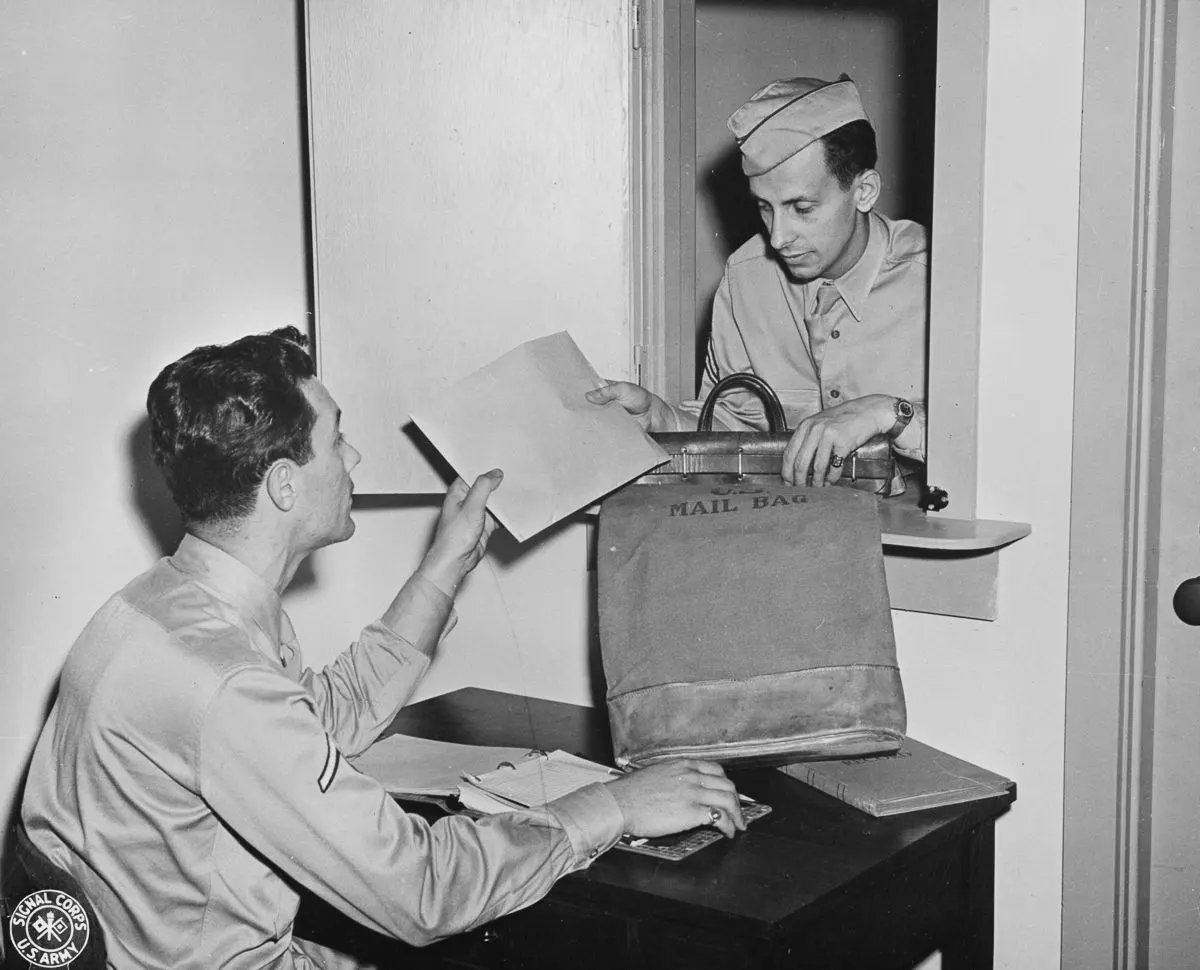
A courier delivers letters for filming and reproducing at the official photo mail station at the Pentagon.
In searching for a way to address this problem, the military postal service turned their eyes to the British “Airgraph”.
The airgraph was invented in the 1930s by the Eastman Kodak Company in conjunction with Imperial Airways (now British Airways) and Pan-American Airways as a means of reducing the weight and bulk of mail carried by air.
Letters would be written on premade forms, these forms would be censored and scanned onto microfilm, the microfilm would be transported by plane, and on arrival, the letters would be printed onto photo paper and delivered.
The US military postal service adopted this process renaming it “Victory Mail”, or “V-Mail” for short, and it proved extremely effective.
The savings of this system were enormous; 2500 pounds of paper letters in 37 mail sacks could be condensed into only 45 pounds of film in one mail sack. In turn, this freed up room for more materiel to supply the war effort.
The US further reduced waste by only printing the letters at 60% scale. The use of V-mail also inadvertently deterred espionage; as only photocopies of letters were being sent, invisible ink and microdots were rendered useless.
Although the V-mail system was only used between June 1942 and November 1945, over 1 billion items were processed through these means.
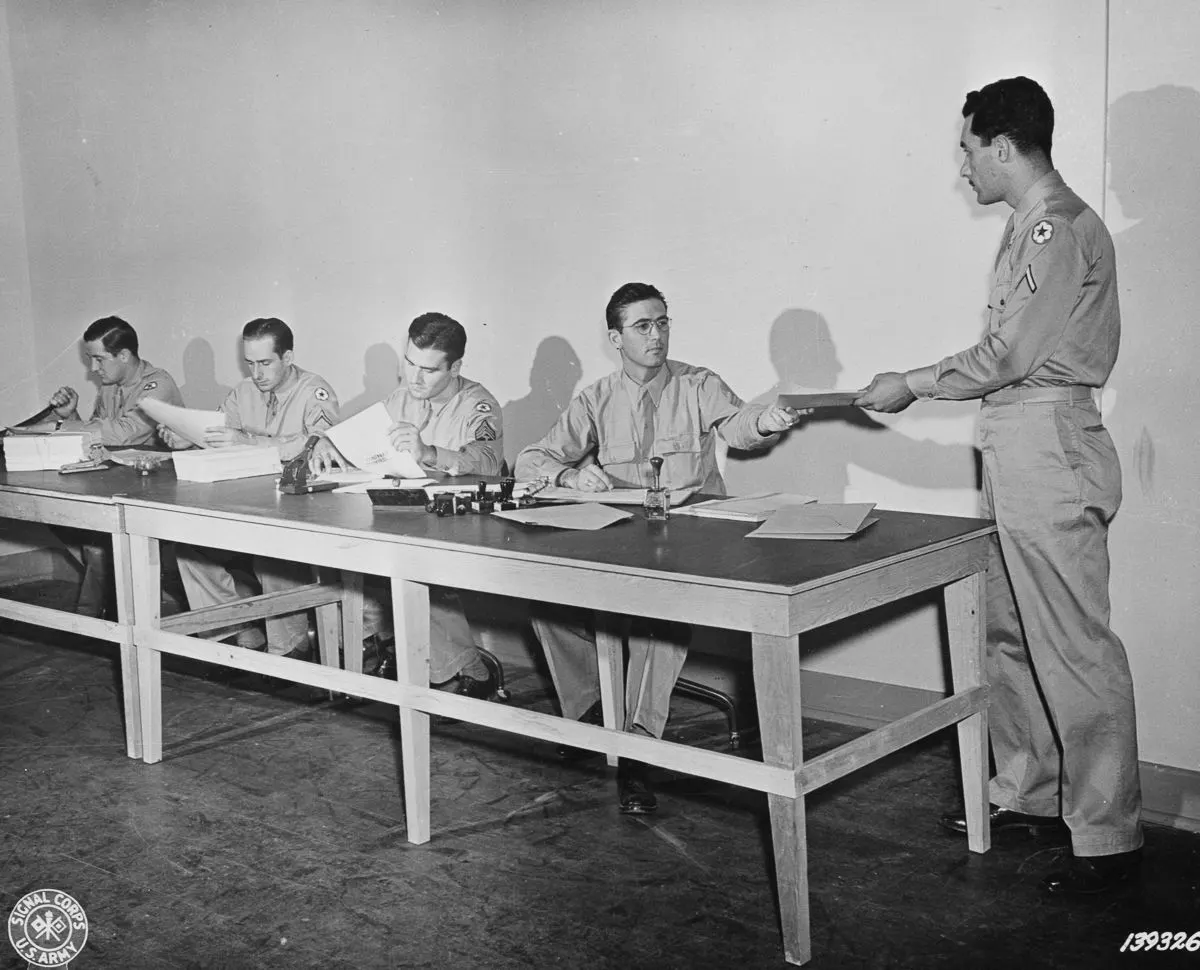
Letters to be microfilmed for V-mail are registered, sorted and prepared for photographing.
An important part of the V-mail system was the use of a standardized stationery which combined the letter and envelope into one piece of paper. Even without microfilming, this was a great space-saving measure.
The form was a sheet specially designed by the Government Printing Office and was provided free of charge by the Post Office at the rate of two sheets per person per day.
The way one wrote on the letter also played a big part in whether one would ultimately be able to read the reduced version. Users of V-mail were instructed: “Use typewriter, dark ink, or dark pencil.
Faint or small writing is not suitable for photographing.” The original forms could accommodate up to 700 typed words.
V-Mail had its drawbacks. It was somewhat limiting in that only a certain number of words could be used. Since the photo prints were ¼ size of the original letter, if the print was too small then the final product was unreadable.
Some stores actually sold special “V-mail readers,” magnifying glasses so that readers could decipher the reduced print.
Another downside of V-mail is that one also couldn’t send enclosures (at least initially) and could not leave a personal imprint in the form of a lipstick kiss on the paper. Lipstick was referred to as the “scarlet scourge,” because it would gum up the machines used to film the letters.
Despite its faults, V-mail was aided by marketing which branded the use of V-mail as a patriotic duty and the use of the service picked up over the years. There is no denying that the V-mail practice saved vital shipping space.

Letters to members of the armed forces overseas are photographed and transferred to V-mail microfilm.

V-mail is inspected for flaws on an enlarging reader.
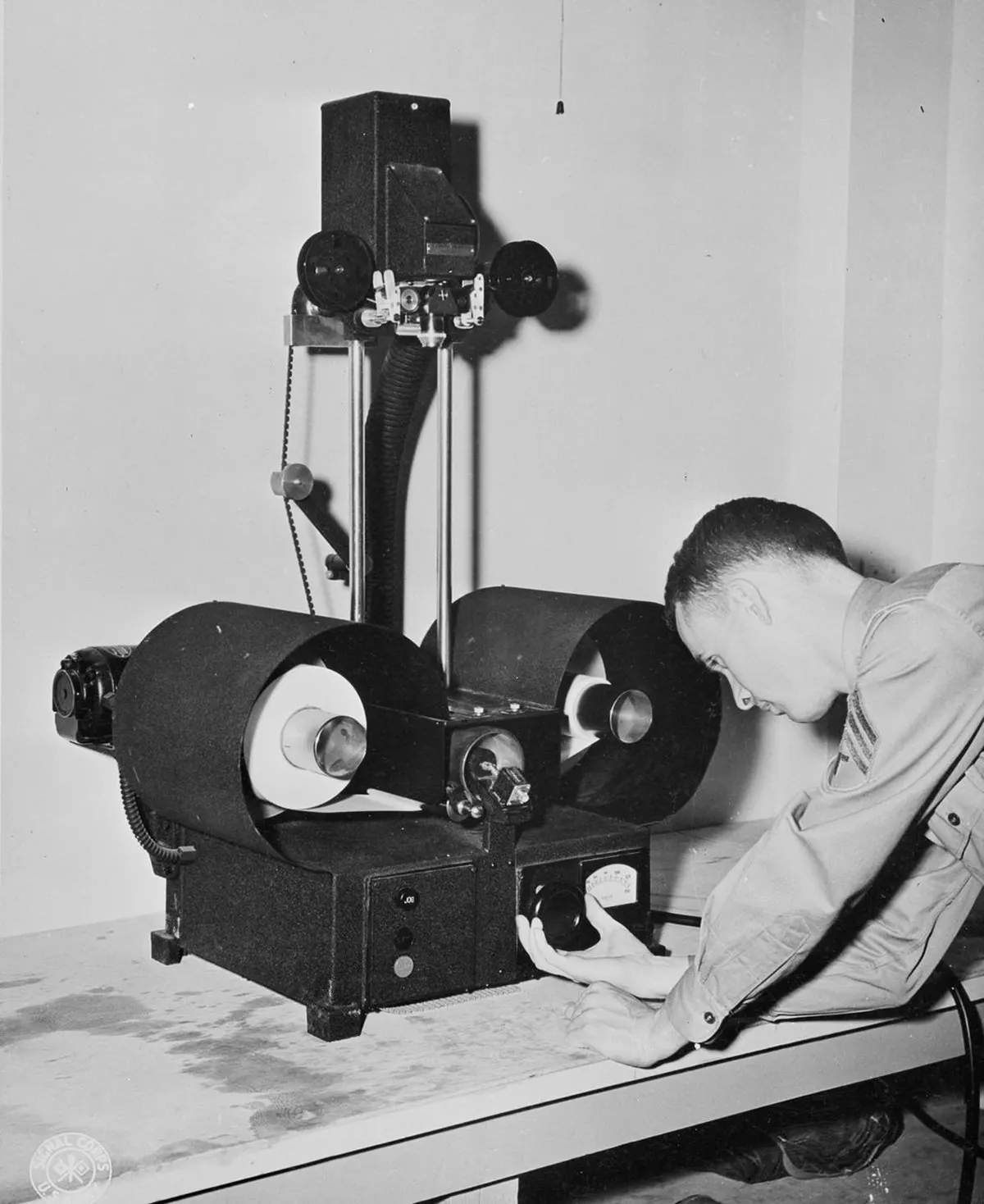
V-mail letters are printed onto paper using a continuous enlarger.

Paper reproductions from V-mail microfilm are developed, fixed, washed and dried on a continuous paper processing machine.
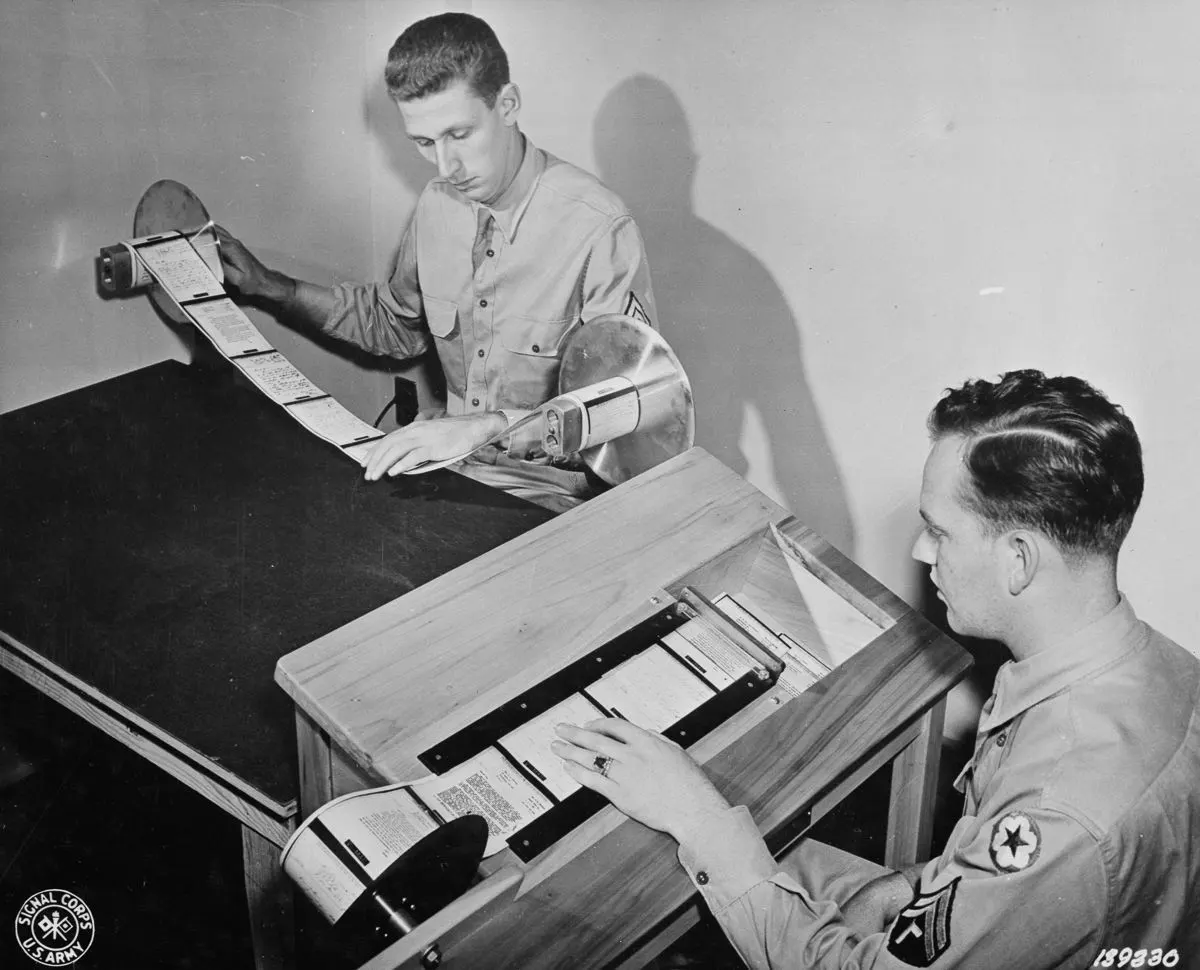
Paper reproductions of V-mail microfilm are inspected and then cut into individual letters by a “chopper.”
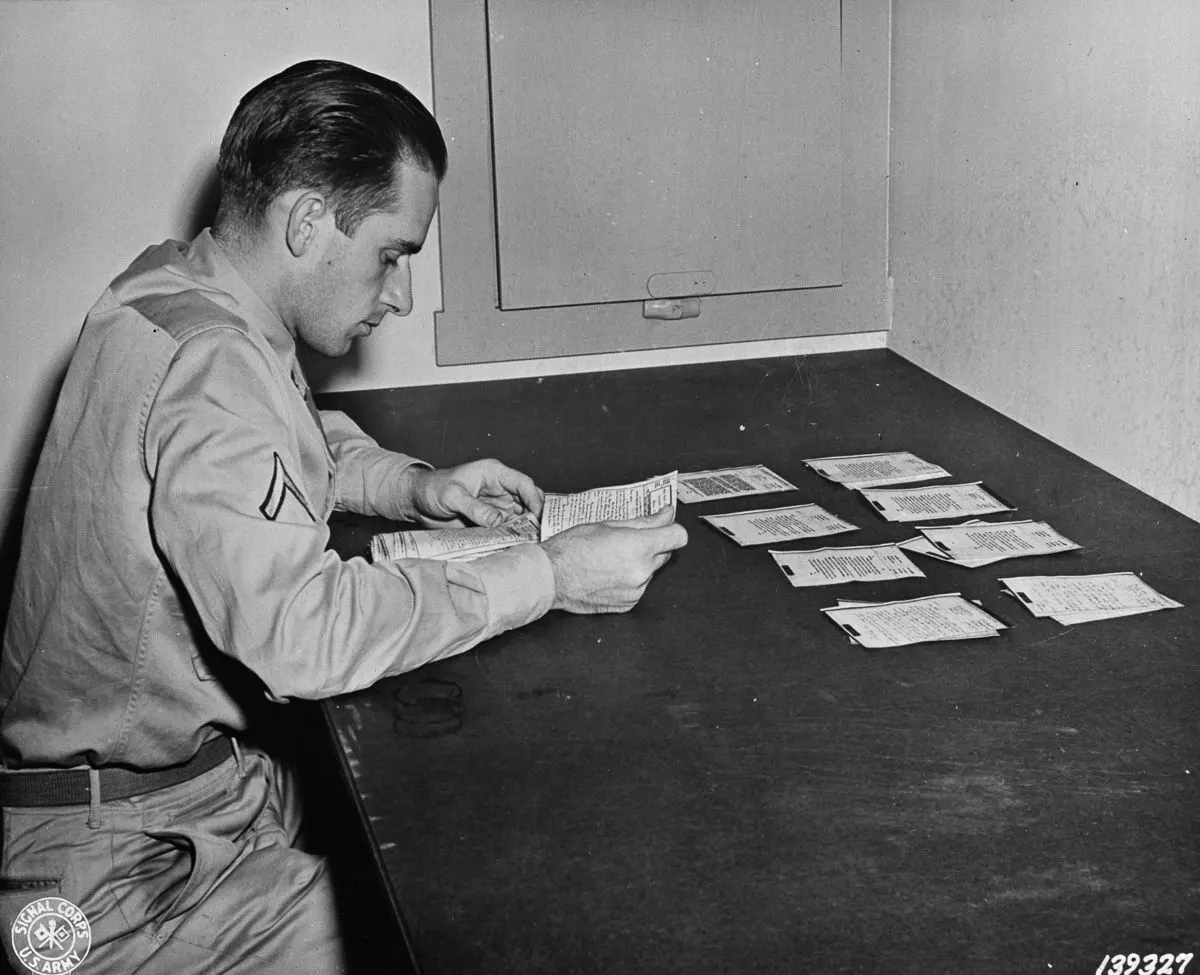
Finished V-mail letters are sorted and prepared for forwarding to recipients.
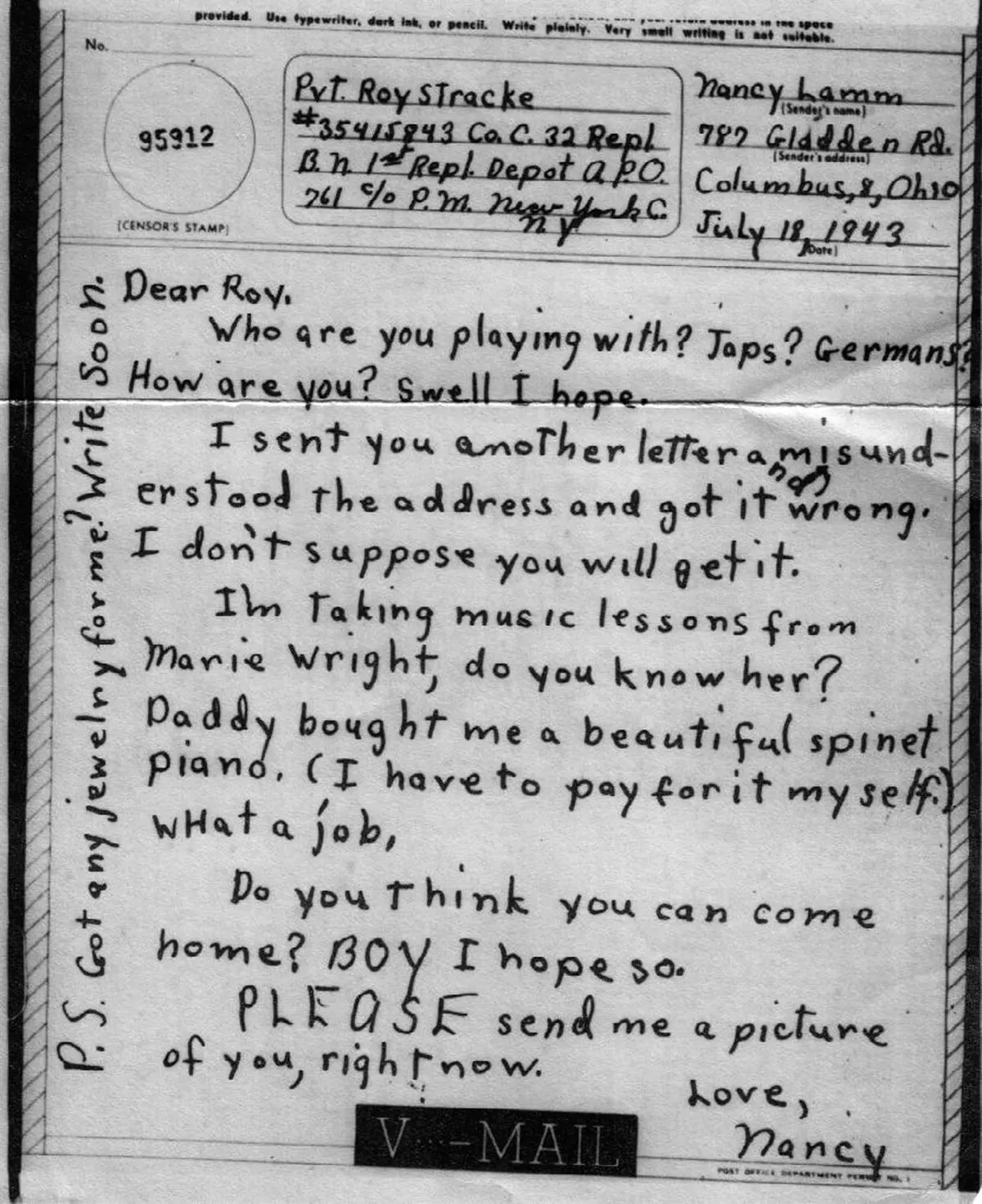
A V-Mail letter.
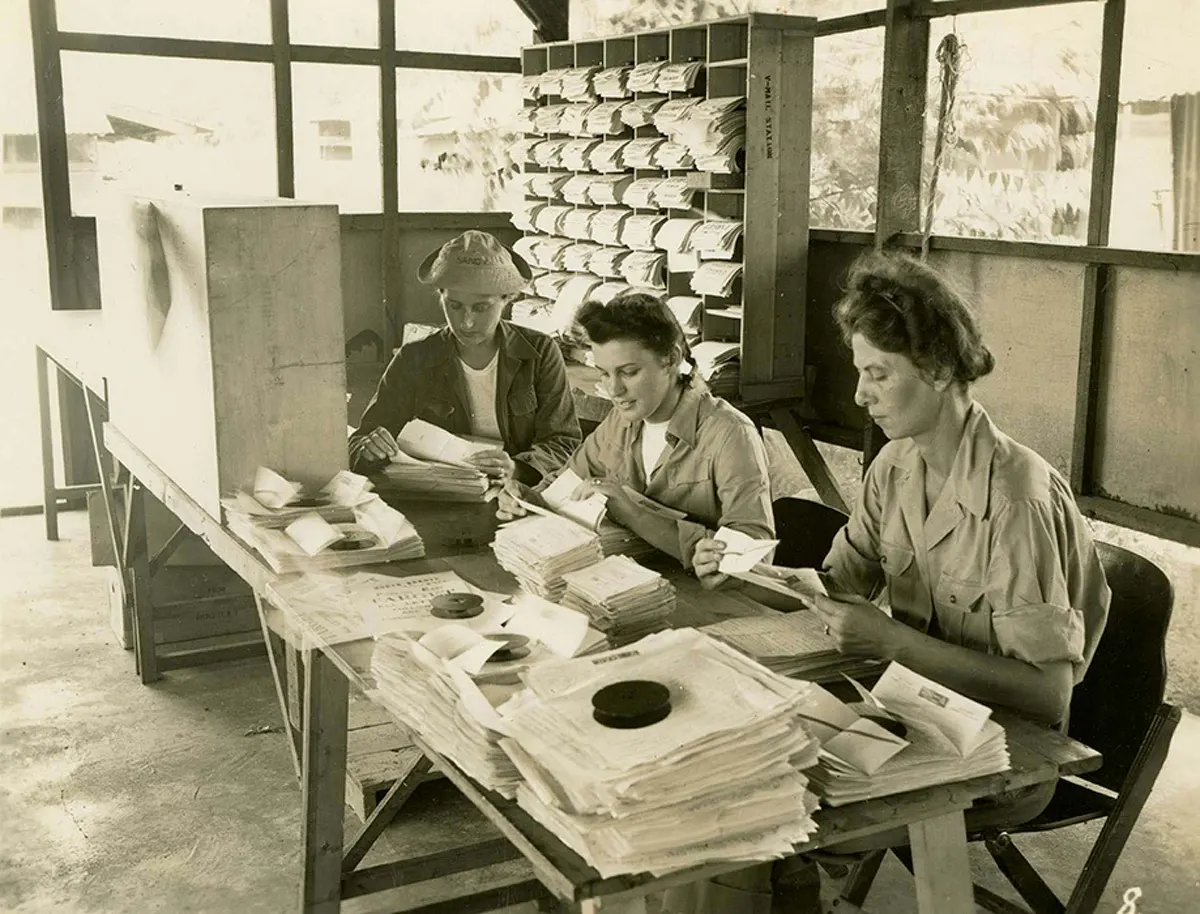
“Here is a section of the opening and targeting operation. Targeting is simply preparing each group of letters with a State target so mail for each group of States can be sent to its proper finishing station in the States. Here also, are withdrawn all letters which will not photograph well. These, of necessity, must be sent by regular mail, which in this case means by air.” Port Moresby, Papua New Guinea, 1944.

“The recording operation, using Recordak machines. These operators photograph approximately seventeen hundred letters on each 100-foot roll of film, and can be done in about three-quarters of an hour.” Port Moresby, Papua New Guinea, 1944.
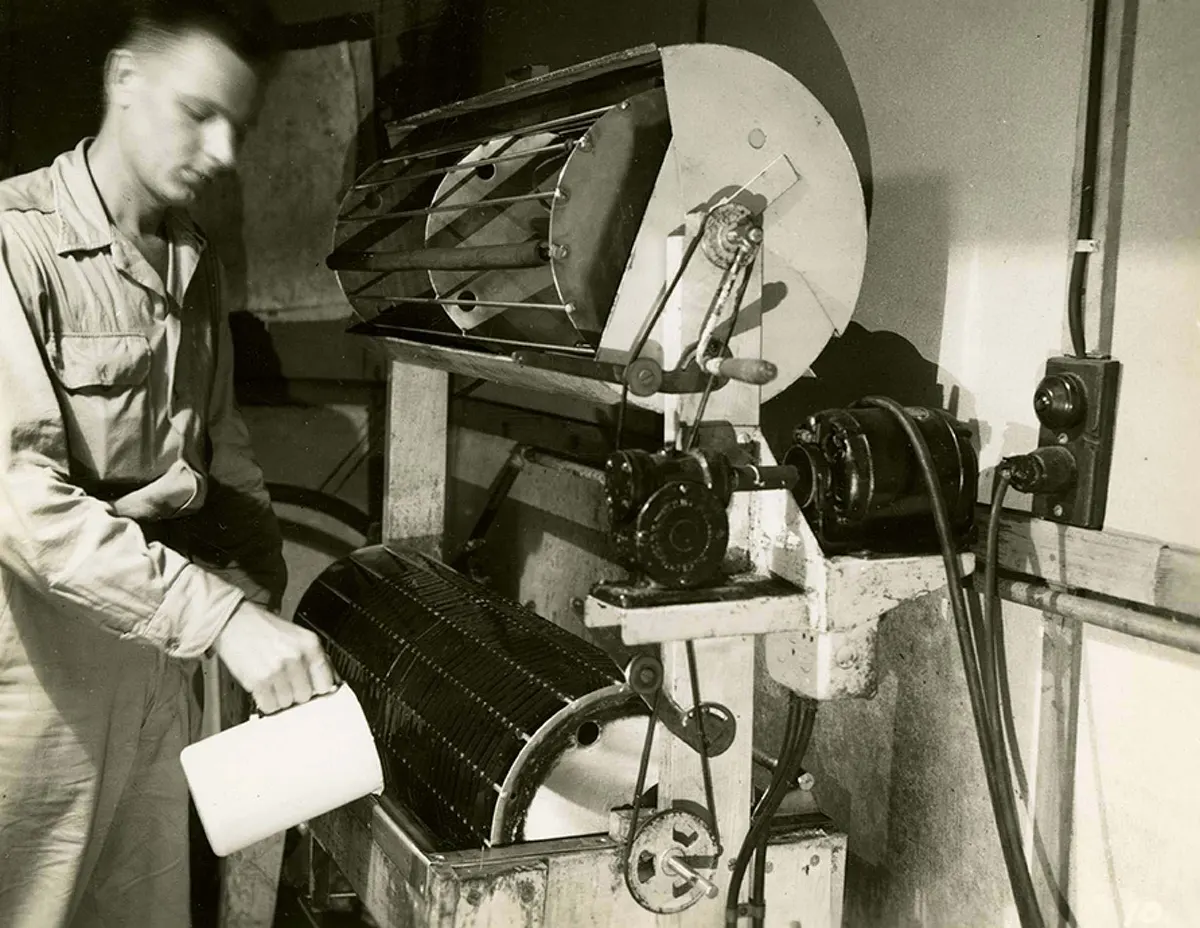
“The next step is the processing of the film, which is done both on automatic machines which do individual rolls. In this shot, the operator has completed the development and is pouring in the hype or fixing bath, after which the film will be subjected to a water spray to wash it thoroughly. It is then fed onto the upper reel which it is thoroughly dried by means of a warm air stream.”

“After processing, the film is taken to inspection where it is carefully examined on a projection machine, for any flaws which may have occurred either during the recording or in the development. These bad letters are then punched out and tallied, so they can be re-photographed on a later roll.”

“Following this, the density of the film is measured on a densitometer and the density noted on its carton, just prior to dispatch.”

“The retake department where all the originals of V-Mail are stored until destruction orders are issued by the States. Destruction orders are not issued until the States stations have satisfactorily reproduced every letter on a roll. Should the States advise that certain letters must be rephotographed, the proper bundle must be located and the letter withdrawn to be recorded again.”

“Initial step in the Receiving section is this operation of checking the postal dispatch sheets and logging in the rolls received from the States. This section is now receiving and completely processing an average of seventy rolls per day.” Port Moresby, Papua New Guinea. 1944.

View of the continuous enlarger on which the image on the film is enlarged to regular V-Mail size of 4 1/4 x 5 inches. Sensitized rolls of paper, 825 feet in length are used. Here, the operator is adjusting the voltage to secure proper exposure. This is determined by consulting a chart which suggests certain voltage and lens aperture settings for any given film density.”

“Paper inspection. At these tables, each roll of finished work is inspected letter by letter and all badly reproduced letters are marked out. Where possible, an attempt is made to produce a better print in the Reprint department. Letters which cannot be satisfactorily reproduced are either sent back to the States to be rephotographed or to be sent via regular mail.” Port Moresby, Papua New Guinea, 1944.

“Paper chopping. At these choppers, each letter is handcut from the roll and here the culls or bad letters are pulled out. Approximately twenty minutes is required to completely chop a full roll of V-Mail.” Port Moresby, Papua New Guinea, 1944.

“On this machine, the letters are folded to correct size for insertion into V-Mail envelops, an operation which requires about eight minutes per roll. In the background are racks of folded letters.”

“This is a view of the inserting and sealing. At the long table, the girls must hand-insert each letter, after which all the envelopes are fed through a sealing machine. In the rear, the sealed letters are then bundled and bagged for dispatch to the Post Office.”
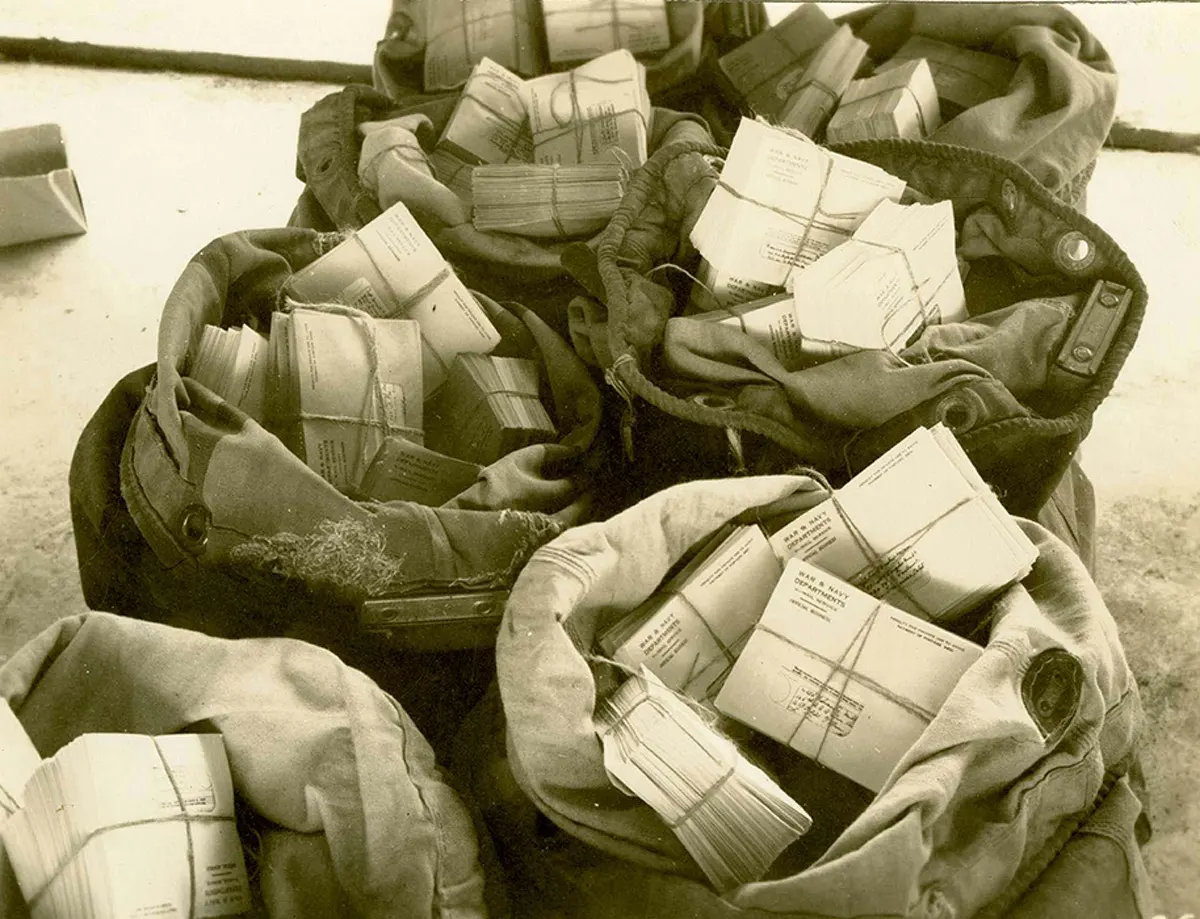
“Finished V-Mail bundled, bagged, and ready for dispatch through the APO to the troops.” Port Moresby, Papua New Guinea, 1944.

“The final act at the airstrip with the mail truck, containing letters for the States and for the troops, pulled alongside the plane.” Port Moresby, Papua New Guinea, 1944.
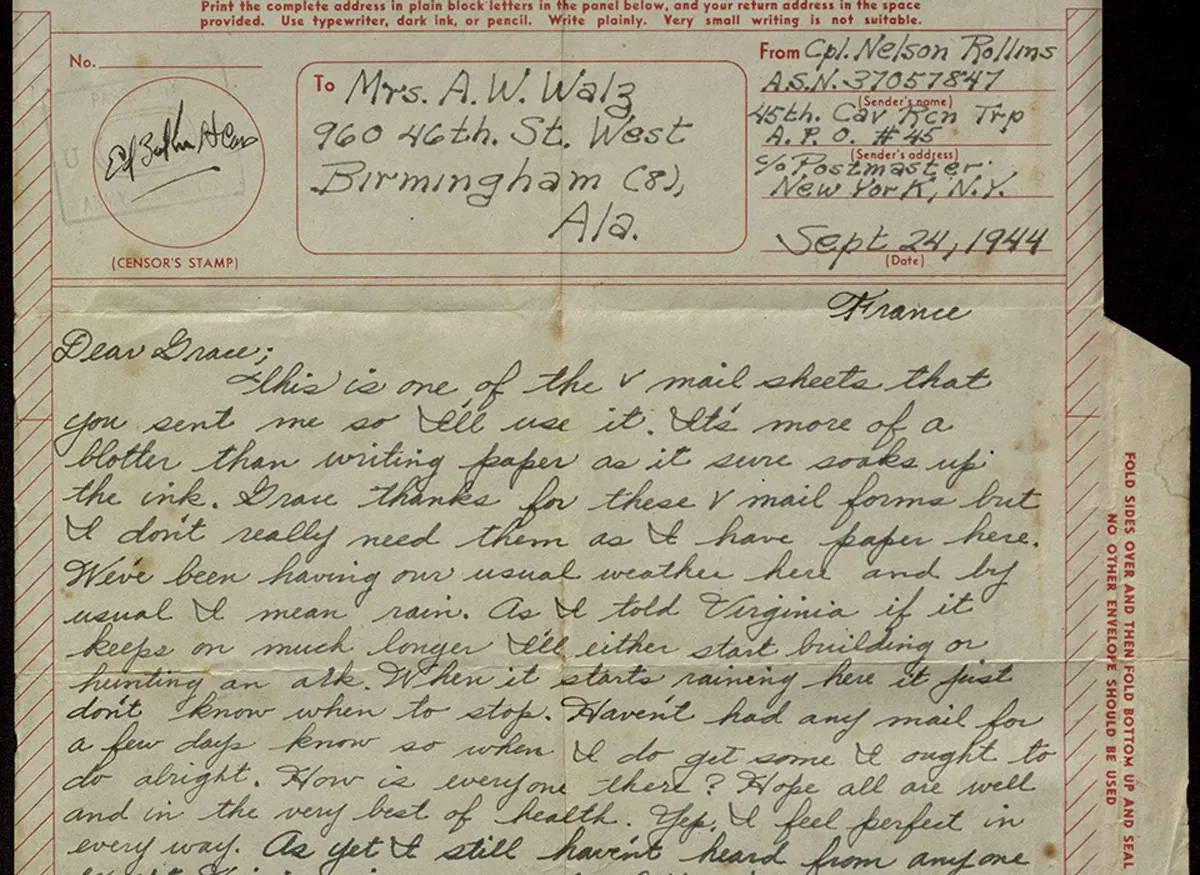
An example of a “long-form” V-Mail, sent through as-is, without being photographed and reproduced, a common practice due to damage or lack of V-Mail facilities. (Photo gifted to National WW2 Museum by Ms. Marjorie Walz).

V-mail from Bill Stover to his family commenting on V-mail’s reputation as a speedy service. (Photo gifted to National WW2 Museum by the Family of William A. Stover).

Heavily damaged, thus un-processed V-mail. (Photo gifted to National WW2 Museum in Memory of Col. R. B. Rordam).
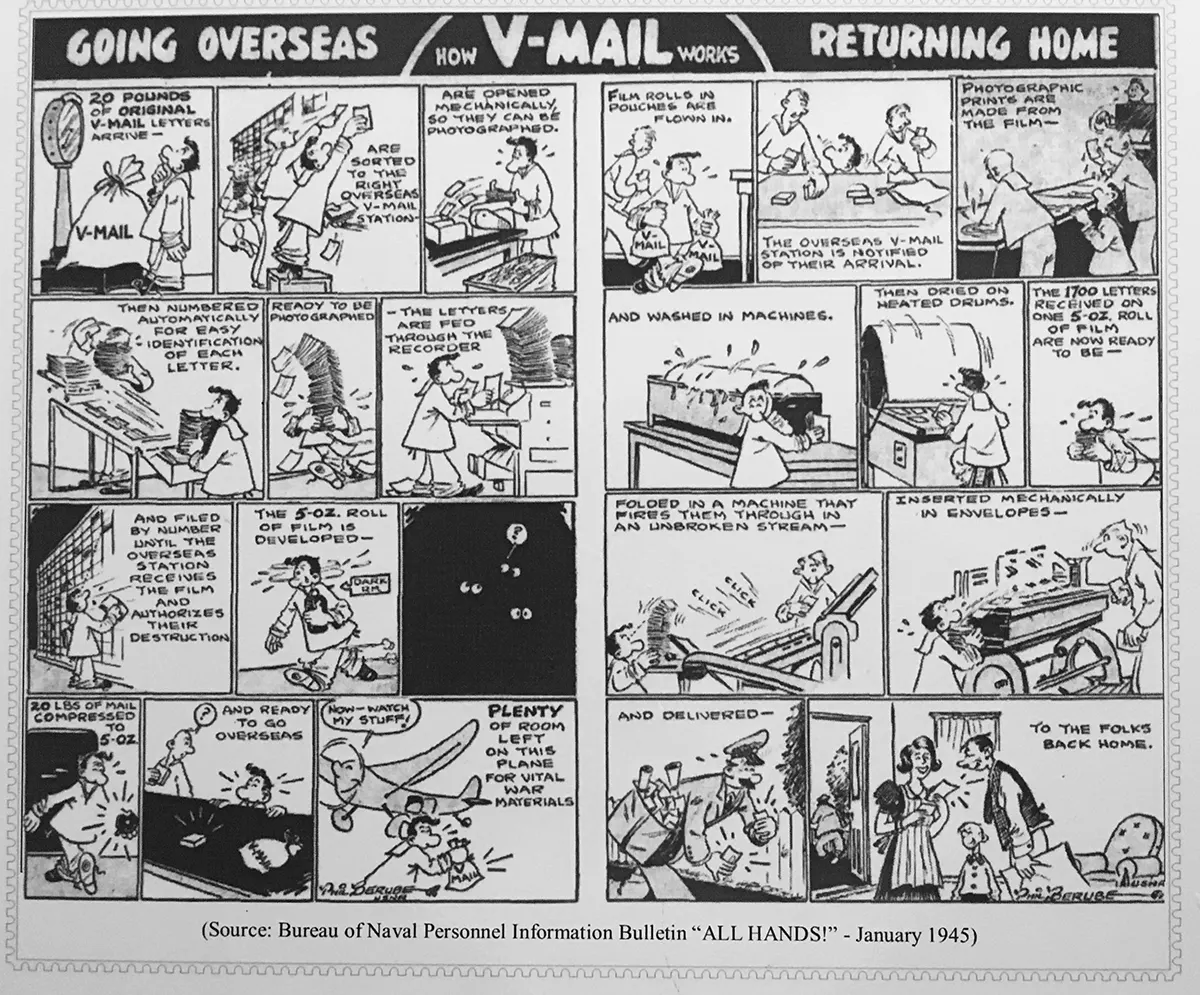
Explanation of V-Mail System in Display aboard USS Alabama (BB 60), Mobile, Alabama.



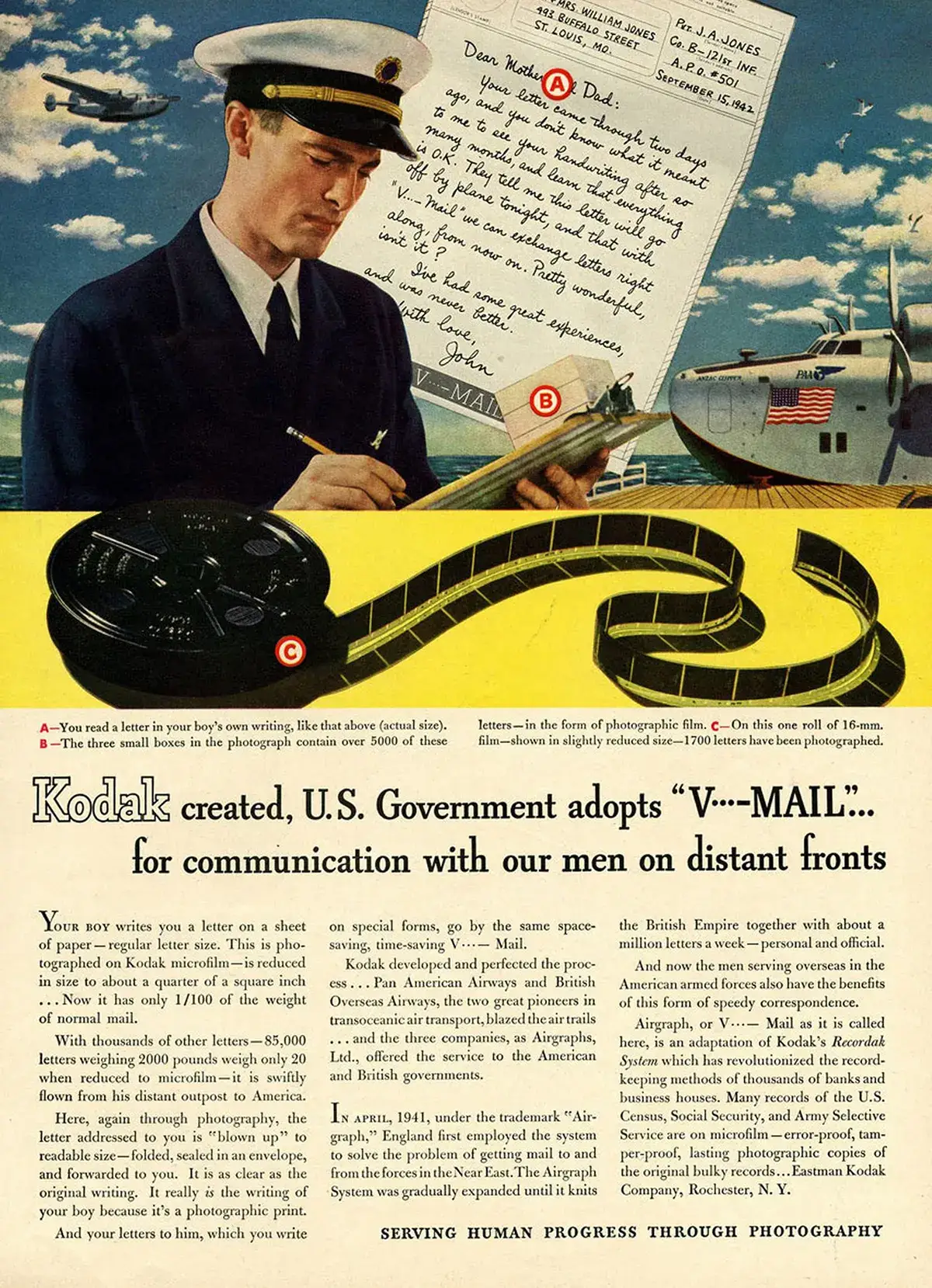
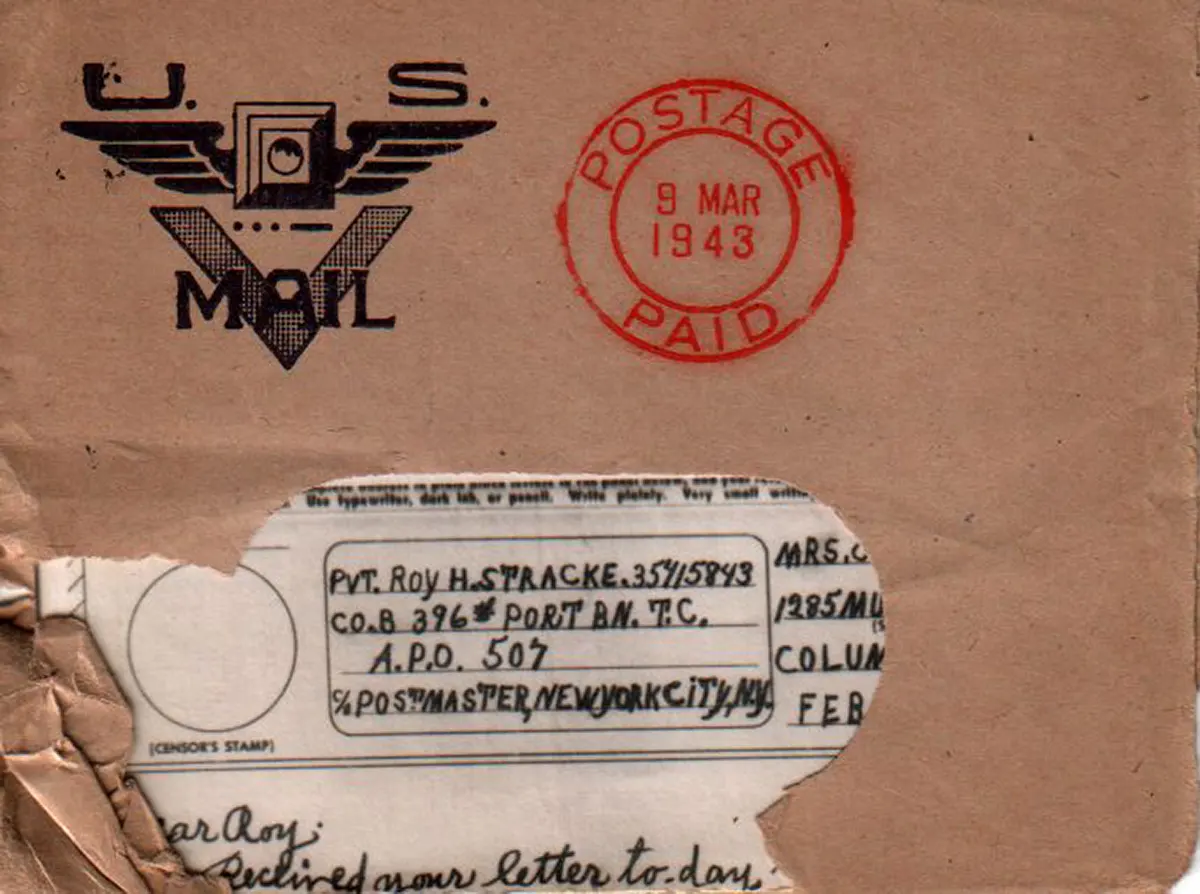
V-mail envelope with V-mail symbol, March 1943.
(Photo credit: Library of Congress / US Army Archives / Smithsonian Museums / The National WWII Museum New Orleans; Mail Call: V-mail by Kim Guise).
